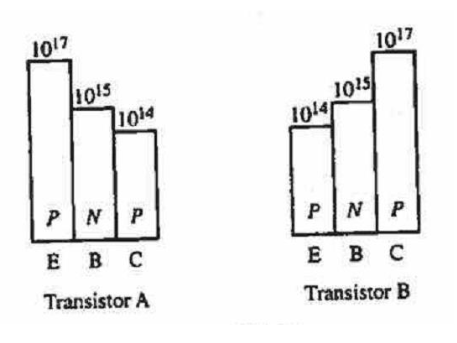

By this, it is shown that the input current controls the flow of o/p current. The change in voltage affects the current entering in a Base terminal and this current will, in turn, affect the o/p current called. For instance, the configuration of a common emitter is shown in the figure below. The working principle of a BJT involved the use of Voltage between the two terminals such as base and emitter to regulate the flow of current through the collector terminal. BJTs are apt for low current applications like switching purposes. The operating principles of these transistors are practically equal and the main difference is in biasing as well as the polarity of the power supply for each type. In the PNP transistor, P stands for positive and the majority charge carriers are holes whereas in the NPN transistor, N stands for negative and the majority charge carriers are electrons. The main difference between BJT and MOSFET is their charge carriers. There are two kinds of transistors namely PNP and NPN. The two regions are named the P-junction and N-junction. Actually, a BJT is a silicon piece that includes three regions and two junctions. This transistor consists of three terminals namely the emitter, base, and collector. Fundamentally, the operation of a BJT transistor is determined by the current at the base terminal. The BJT is a current-controlled device where the o/p of the base terminal or emitter terminal is a function of the current in the base terminal. The multimeter will not display OL.A bipolar junction transistor is one type of semiconductor device and in the olden days, these devices are used in the place of vacuum tubes. Removing the negative probe from the base and placing it on any other pin.Touching the positive probe to pin 3 (Collector).Touch the positive probe to pin 1(Emitter)of the transistor and the meter will display a voltage.Place the negative probe of the meter to pin 2 ( Base) of the transistor.And when the probe is connected the other way round, the meter displays OL meaning open circuit. so if the positive probe of the multimeter is connected to the anode and the negative probe to the anode, then the meter will display a voltage between 0.5v to 0.7v.The collector(C) in N type material, same as the cathode of the diode. The Base (B) in N-type material is the same as the anode of the diode. testing NPN transistor using a multimeter
PNP VS NPN BJT HOW TO
See Also How to measure the value of a resistor using a multimeter. the logic of the NPN test is this, the Emitter(E) in N-type material is the same as the cathode of the diode.leaving the red probe on the base, change the black probe to the collector, the third pin, and record the value of the voltage on the meter.Some values of voltage will show up on the meter. use the second prob of the meter (black) and touch the first pin, (emitter).Turn ON the multimeter and place the red probe of the meter to the middle pin (base) of the transistor.This can be done by rotating the knob and positioning it on the diode mode. Set the multimeter in diode measuring mode.

Steps in identifying the NPN type BJT transistor. When testing for a transistor in a circuit, remove the transistor from the circuit before testing. And that can be done by the simple use of a multimeter or studying the transistors are charts.

Having known the pinout of the transistor, the next step is to identify if the transistor is a PNP or NPN type. How to test electronic diode using a multimeter How multimeter can be used to determine PNP and NPN of BJT transistors. The metallic body of the transistor is the emitter, while the remaining two pins are the base and the collector.

This form of the transistor has a metallic case body and two pins under the transistor. The first is the base, while is second is the collector, and the last, the Emitter. Starting from your left-hand side and number and label the pins. The metallic side of the transistor is made to face the ground, making the other side face upwards. In identifying e pinout of this type of transistor. They are normally connected to a cooling sink on circuits for cooling. These are the type of transistors that looks like a voltage regulator IC. The pin closer to the projection is the emitter while the center one is the base with the last emitter. To determine the terminal of this type of transistor, pick the transistor and observe around the metallic body is a See Also How to test electronic diode using a multimeter


 0 kommentar(er)
0 kommentar(er)
